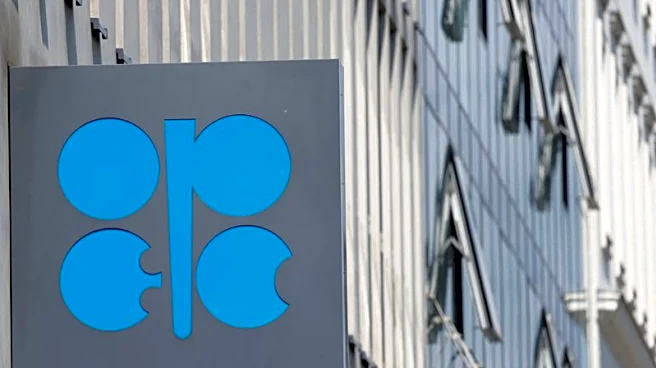What's Happening?
OPEC's oil production saw a modest increase of 30,000 barrels per day in October, following an OPEC+ agreement to raise output. This increase, however, marks a slowdown compared to previous months. The
Organization of the Petroleum Exporting Countries, which includes major oil producers like Saudi Arabia and Iraq, pumped a total of 28.43 million barrels per day last month. The increase was primarily driven by Saudi Arabia and Iraq, although declines in Nigeria, Libya, and Venezuela offset these gains. The decision to slow the pace of output increases comes amid concerns over a potential supply glut. Additionally, some OPEC members are implementing extra cuts to compensate for earlier overproduction, which further limits the impact of the increased output.
Why It's Important?
The increase in OPEC's oil output is significant as it reflects the organization's cautious approach to balancing global oil supply and demand. The decision to slow output increases could impact global oil prices, which are sensitive to changes in supply levels. For the U.S., this development may influence domestic energy markets and consumer prices, particularly if global oil prices rise due to perceived supply constraints. Energy companies and industries reliant on oil may face cost implications, while consumers could see changes in fuel prices. The situation underscores the ongoing challenges in managing global oil supply amid fluctuating demand and geopolitical tensions.
What's Next?
Looking ahead, OPEC+ plans to pause output hikes in the first quarter of 2025, which could further influence global oil markets. Stakeholders, including governments and energy companies, will be closely monitoring these developments to assess their impact on oil prices and supply stability. Potential reactions from major oil-consuming countries, including the U.S., could involve strategic adjustments in energy policies or stockpile management to mitigate any adverse effects on their economies.












